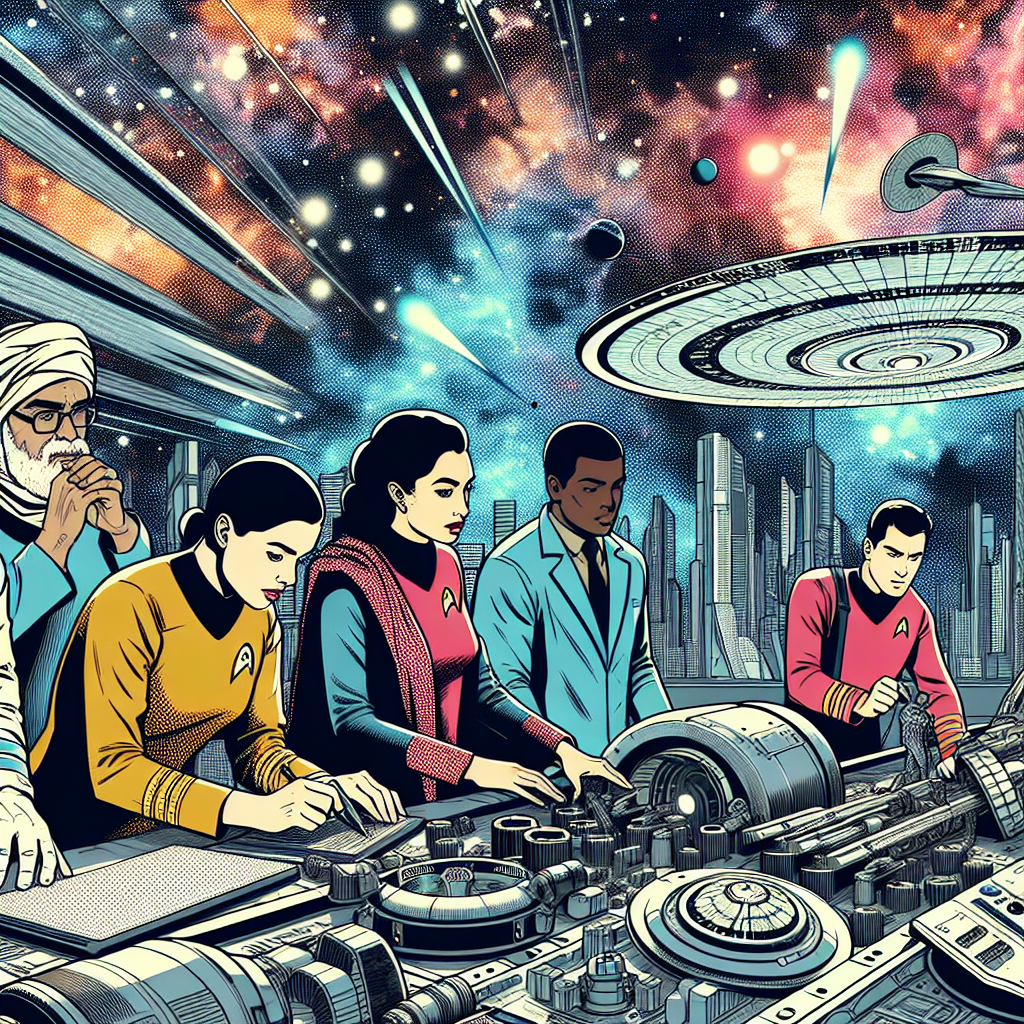Warp drives, the holy grail of interstellar travel. If we could create warp drives, we'd be able to traverse vast distances in a relatively short period, making interstellar travel a reality. But, can we really bend space-time to our will?
The concept of a warp drive is rooted in Einstein's theory of general relativity. According to this theory, gravity is not a force, but rather the curvature of spacetime caused by massive objects. The more massive the object, the greater the curvature. Imagine placing a heavy bowling ball on a trampoline; the surface will warp and curve, much like spacetime around massive objects.
Now, imagine you're on a train, and you throw a ball straight up in the air. From your perspective on the train, the ball will come down and land in your hand. But, if you ask a stationary observer on the platform, they'll say the ball didn't come straight down; it looked like it was deflected to the side because the train was moving really fast. That's kind of like how spacetime is curved by massive objects, causing objects to move along curved trajectories.
In the context of a warp drive, we'd need to create a "bubble" of spacetime that contracts in front of us and expands behind us. This would effectively create a "pocket" of spacetime that moves at a speed greater than light, while the spacecraft itself remains stationary within the bubble. It's like being on a train, but instead of the train moving, the tracks themselves are moving – and you're along for the ride.
One of the most significant challenges in creating a warp drive is the amount of energy required. We're talking about an enormous amount of energy, far beyond what our current technology can provide. To put it into perspective, if we were to use our current most efficient energy source, the International Space Station's solar panels, it would take about 100 billion years to generate the energy required to create a warp bubble just one meter in diameter.
Another significant hurdle is the issue of "exotic matter." According to our current understanding of physics, creating a warp bubble would require a type of matter that has negative energy density. The problem is, we've never observed or created such matter in a lab, and it's unclear if it even exists. It's like trying to build a castle on a foundation of maybes and what-ifs.
Some theories suggest that it might be possible to create a warp bubble using a concept called "quantum entanglement." This is a phenomenon where particles become connected in such a way that they can affect each other, even when separated by vast distances. Imagine having a pair of "entangled" walkie-talkies; if you say something into one, the other will repeat it, even if you're on opposite sides of the universe.
Other theories propose the use of "dark energy," a mysterious force thought to be responsible for the accelerating expansion of the universe. It's like trying to harness the power of a cosmic wind to propel our spacecraft forward.
However, even if we could overcome the energy and exotic matter hurdles, there are still many unanswered questions about the stability and safety of a warp drive. For example, what would happen if the warp bubble were to collapse or become unstable? It's like trying to ride a Dragon-shaped rollercoaster through a cosmic storm.
Despite the challenges, scientists and engineers continue to explore the possibilities of a warp drive. It's an alluring dream, to be able to explore the vast expanse of the cosmos, to venture forth into the unknown. But for now, it remains a fascinating thought experiment, a "what if" that sparks the imagination and inspires us to push the boundaries of human knowledge.
So, what would it take to make a warp drive a reality? In short, it would require a fundamental rethinking of our understanding of the universe, a revolution in energy production and storage, and a willingness to push the boundaries of what we thought was possible. It's a tall order, but the allure of the impossible has always driven humanity to strive for greatness.
In the end, the possibility of a warp drive serves as a reminder that, despite the challenges, human ingenuity and creativity can overcome even the most daunting obstacles. It's a beacon of hope, a reminder that, one day, we might just find ourselves traversing the cosmos like never before.

Popular Space Questions
Find answers to the trending space questions being asked by our community on social media.
- How many galaxies are there in the universe?
- How far is Pluto from Earth?
- How many planets are in the Milky Way?
- How many planets are in our solar system?
- What would happen if a rogue planet entered our solar system?
- What are the planets in order?
- How big is the universe?
- How big is the Earth?
- What if we found a way to manipulate gravity?
- How far is the Sun from Earth?